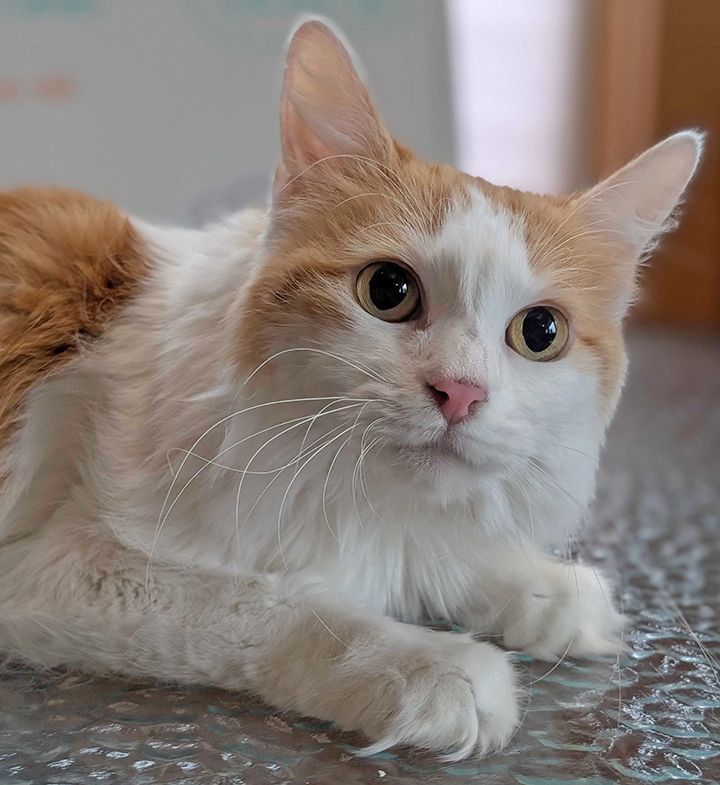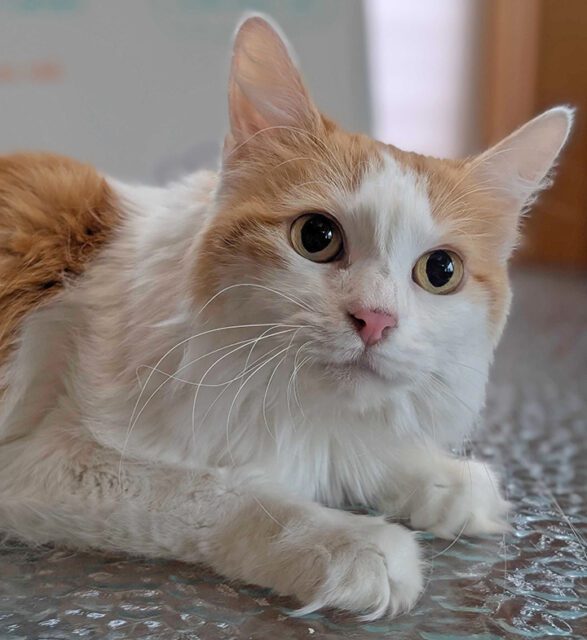
04 Jun Second Chance: Save Sofas: Ideas to Manage Your Cat’s Scratching!
Since 1994, the Animal Resource Center and the Shops of Second Chance Humane Society have been dedicated to serving animals in Southwestern Colorado. Adoption hours are every day from 11 a.m. to 5:30 p.m. The facility is located at 177 County Rd 10, Ridgway, CO. View shelter pets and services online at secondchancehumane.org.
View shelter pets and services online at www.secondchancehumane.org.
View shelter pets and services online: www.adoptmountainpets.org.
Donate here or mail to: PO Box 2096, Ridgway, CO, 81432.
Second Chance is actively looking for fosters. Interested parties should email foster@secondchancehumane.org
Go here for more about Second Chance.

The following pet column is from the Feline Behavior Library at Second Chance, where we share tips for common training challenges.

Peaches
Scratching is normal, healthy feline behavior, not misbehavior! Cats scratch to sharpen and maintain their claws, mark territory (visually and with scent glands in their paws), get exercise, and relieve stress.
Cats may scratch your sofa because they don’t have appealing alternatives. Scratching posts are great, but most cats prefer certain sizes, materials, or orientations (some prefer horizontal; others like the tall kind). They might also scratch furniture, rugs, or other household items because they are stressed or adjusting to a new environment, or because they get attention for doing so.
Redirecting the claws to more acceptable scratchers means providing multiple scratching posts: tall, vertical, flat, horizontal, different textures (rope, cardboard, carpet, wood), and placing scratchers in high-traffic areas and near the furniture. It helps to make the scratchers appealing by rubbing them with catnip or silvervine to suggest a play area with toys, and rewarding the cat with treats or praise.
Training also means making the wrong things less fun. Cover the areas they’ve been scratching with double-sided tape, slipcovers, aluminum foil, or plastic, and use scent deterrents. Rearranging furniture can also lessen the appeal of a sofa or chair.
Keep a cat’s nails trimmed to reduce scratching. If you’re not in the habit of doing so, use cat-safe nail trimmers and go slowly. If you’re unsure, ask your vet or groomer for a demonstration. Get your cat comfortable with nail trims by ensuring they are positive! This could mean doing a couple of nails at a time and giving them a break.
No matter how much you love your furniture, we know you love your cat more. So, please… do NOT declaw your cat. Declawing is the amputation of the last bone in each toe. It’s like cutting off a finger at the last joint. Declawed cats may suffer from long-term pain or arthritis, Litter box avoidance (pain from stepping on litter), increased biting (no claws = no defense), and behavioral issues. Cats need their claws for climbing and jumping, defense, play and hunting instincts, communication and emotional regulation, and for stretching and relaxing.
Claws are a vital part of being a cat. Redirecting scratching is the humane, effective way to protect your furniture and support your cat’s well-being.
Peaches is an eight-year-old, ginger and white, long-haired cat who came to us after her person passed away. She is a sweet girl who is confused right now. Once she warms up, she loves to cuddle. She was declawed before coming to us, so she will need to be an indoor cat.


Sorry, the comment form is closed at this time.